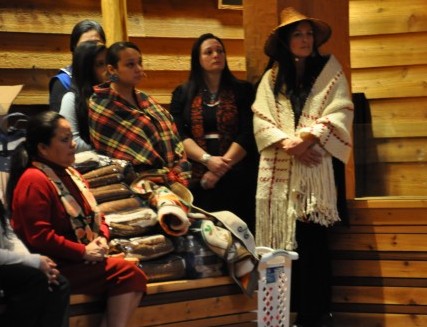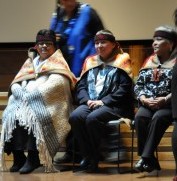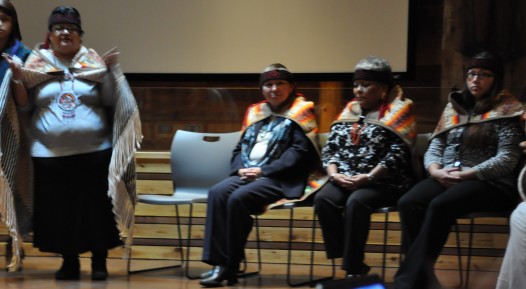Christopher Dunagan | Kitsap Sun – February 20, 2013
SKOKOMISH — A federal lawsuit involving the rights of Indian tribes to hunt game on “open and unclaimed lands” has been filed by the Skokomish Tribe against the state of Washington.
The lawsuit claims that actions by state agencies and officials have denied tribal members access to their legitimate hunting areas. Furthermore, state officials have imposed civil and criminal sanctions on tribal members and promoted a “discriminatory scheme” of hunting regulations that favor non-Indians, the suit says.
The Skokomish Tribe’s lawsuit could open the door to long-awaited litigation that could define the extent of treaty rights related to hunting animals and gathering roots and berries by Native Americans across Washington state.
Listed as defendants in the case are state officials who oversee the Department of Natural Resources, Department of Fish and Wildlife and Attorney General’s Office. Also listed are the county prosecutors in Mason, Kitsap, Jefferson, Grays Harbor, Clallam and Thurston counties, who are charged with prosecuting hunting violations.
The lawsuit asks the federal court to define the extent of the tribe’s hunting and gathering rights, identify the territory where the tribe may operate, confirm the tribe’s “exclusive and co-concurrent management authority” and declare a tribal allocation for game, roots and berries.
The tribe also seeks an injunction to prevent state officials from interfering with tribal rights to hunt and gather roots and berries.
Assistant Attorney General Joe Shorin, assigned as lead attorney for the state, said he and his colleagues are evaluating the tribe’s legal complaint and will file an answer with U.S. District Court in Tacoma.
“It is too early to say what, if any, precedent this case will have,” Shorin said. “There has not been a lot of litigation regarding these hunting and gathering issues. Part of that may be that the parties have been working together fairly effectively.”
In response to questions, Joseph Pavel, vice chairman of the Skokomish Tribal Council, said tribal officials are preparing a written statement.
A landmark 1974 ruling by U.S. District Judge George Boldt and following court decisions held that treaties signed in the 1850s guaranteed tribes the right to take half the harvestable fish and shellfish, with some exceptions. Tribal fishing areas have been approved by the courts, though some areas are still in litigation.
As a result of those rulings, Washington Fish and Wildlife Commission adopted a policy in 1988 calling for negotiations with various tribes to resolve hunting issues. Tribes typically set hunting rules for their own members and coordinate with state officials on management plans for specific populations, including six identified elk herds. But the courts have never delved into hunting rights to the extent they have for fish and shellfish.
The 1855 Treaty of Point No Point preserves the “privilege of hunting and gathering roots and berries on open and unclaimed lands.” That treaty — signed by representatives of the Skokomish, S’Klallam and Chimakum people — ceded to the United States tribal lands around Hood Canal and the Strait of Juan de Fuca.
In its lawsuit, the Skokomish Tribe contests state maps that purport to identify those ceded lands, as well as a Washington State Supreme Court ruling that limits “open and unclaimed lands” to those not in private ownership.
The lawsuit argues that state Supreme Court cases fail to define the extent of the hunting and gathering rights of the Skokomish Tribe. That lack of definition has caused state officials to “unlawfully interfere with plaintiff Skokomish Tribe’s privilege of hunting and gathering on open and unclaimed lands as guaranteed by Article 4 of the Treaty of Point No Point …
“This unlawful interference … resulted and continues to result in denial of lawful access to plaintiff Skokomish Indian Tribe’s territory and use of resources located thereon.”
The tribe’s lawsuit lays out an extensive history of hunting before the treaties were signed. The Skokomish Tribe, which includes the successor of the Twana people, ranged throughout the Hood Canal region and lived in nine communities, mostly at the mouths of rivers.
Tribal members took sea mammals, including porpoises, seals, sea lions and whales; waterfowl, including geese, brant and duck; and land game, including elk, bear, deer, beaver, mountain beaver and muskrat, according to the lawsuit. Tribal people also gathered plants, including the roots of ferns and other plants, as well as a wide variety of berries.















